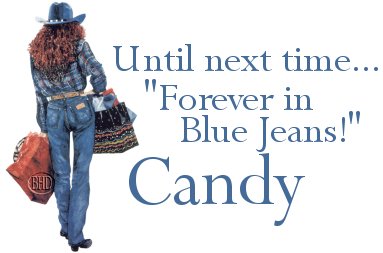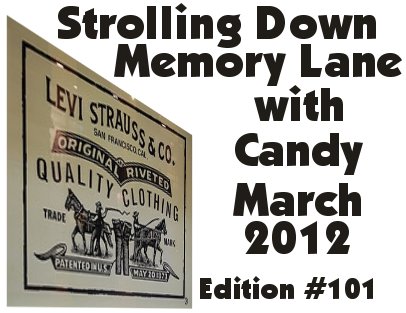
For today's stroll you get to put on your favorite pair of jeans and pay homage to the men that started it all...I know that I can't remember a time in my life when I didn't wear jeans...from the 50's when I was little and rolled them up at the bottom to be like the older girls on my block, to the 60's when my two best friends, Cathy and Jinx and I couldn't wait to wear our new bell bottomed jeans to the Friday night teen dance at the recreation center to the present day when although I need them with a little stretch to them...I still love my blue jeans!

No item of clothing is more American than the blue jeans invented in 1873 by Jacob Davis and Levi Strauss. These two visionary immigrants, turned denim, thread and a little metal into the most popular clothing product in the world. Waist overalls, was the traditional name for work pants, which is what these first jeans were called. The word jeans became more popular around 1960 when the baby-boom generation adopted the term for its favorite type of pants, blue jeans..
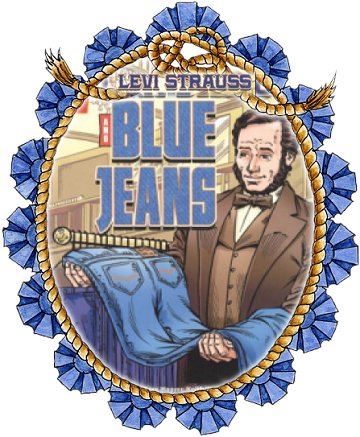
In 1853, the California gold rush was in full swing, and everyday items were in short supply. Levi Strauss, a 24-year-old German immigrant, left New York for San Francisco with a small supply of dry goods with the intention of opening a branch of his brother's New York dry goods business. Shortly after his arrival, a prospector wanted to know what Mr. Strauss was selling. When Strauss told him he had rough canvas to use for tents and wagon covers, the prospector said, "You should have brought pants!," saying he couldn’t find a pair of pants strong enough to last.
Levi Strauss had the canvas made into waist overalls. Miners liked the pants, but complained that they tended to chafe. Levi Strauss substituted a twilled cotton cloth from France called "serge de Nimes." The fabric later became known as denim and the pants were nicknamed blue jeans. Levi Strauss & Company

In 1873, Levi Strauss & Company began using the pocket stitch design. Levi Strauss and Nevada tailor David Jacobs co-patented the process of putting rivets in pants for strength. On May 20, 1873, they received U.S.Patent No.139,121. This date is now considered the official birthday of "blue jeans." The two-horse brand design was first used in 1886. The red tab attached to the left rear pocket was created in 1936 as a means of identifying Levi’s jeans at a distance. All are registered trademarks that are still in use.
The first jeans came in two styles, indigo blue and brown cotton "duck." Unlike denim, the duck material never became soft and comfortable so it was eventually dropped from the line. Although denim pants had been around as work wear for many years, historically dating back to England in the 1600s with a fabric there called denim, it was the first use of rivets that created what we now call jeans. "Waist overalls" was the traditional name for work pants, which is what these first jeans were called. The word jeans became more popular around 1960 when the baby-boom generation adopted the term for its favorite type of pants.
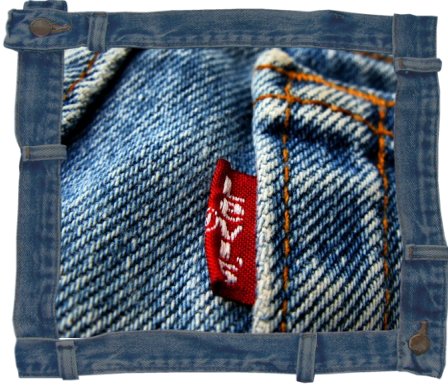
The denim for the riveted work pants came from the Amoskeag Mill in Manchester, New Hampshire, a company known for the quality of its fabrics. Within a very short time, all types of working men were buying the innovative new pants and spreading the word about their unrivaled durability. Hard to imagine that back in 1885, when denim first established itself as a reliable work wear cloth for a working man's garment — that a pair of Levi overalls cost $1.25. Brand new.
Holding a patent on this process meant that for nearly twenty years, Levi Strauss & Co. was the only company allowed to make riveted clothing until the patent went into the public domain.. Around 1890, these pants were assigned the number 501, which they still bear today. When the patent expired, dozens of garment manufacturers began to imitate the original riveted clothing made popular by Levi Strauss & Co.
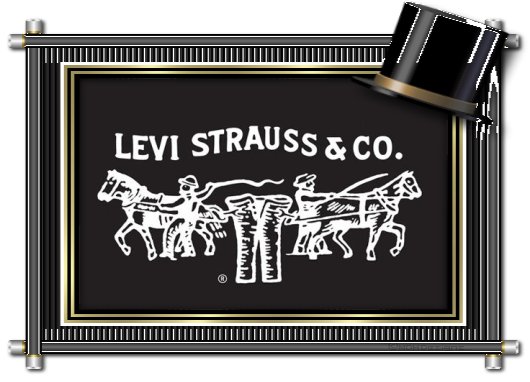
In the 1950s, high school kids put them on as a radical way of defining themselves, of wanting to look and be more adult — and dangerous and rebellious against adults because adults didn't wear jeans. A decade later, blue jeans became a symbol of egalitarianism, a uniform for young adult baby boomers waging a generational war. In the 1970s Me Decade and the beginnings of celebrity culture surfaced, jeans were definitely about being sexy and all about fashion.
In 1980 came the controversial Calvin Klein ad slogan heard around the world. Who can ever forget 15-year-old Brooke Shields (barely old enough to get her driver's permit) purring into living rooms "Nothing comes between me and my Calvins"?
As Vogue magazine editor in 1988, Anna Wintour's first cover was a pair of Guess? stonewash jeans teamed with a Christian Lacroix bejeweled top. The 1990s took denim onto country-western dance floors, onto the red carpet and created puzzling fashion styles from born-to-be-torn grunge jeans to baggy hip-hop jeans to rock star appeal — all adding to the confusion of casual Fridays.
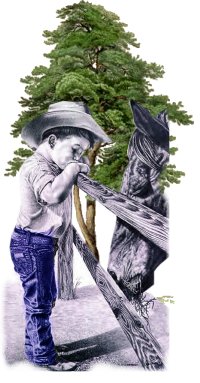
The term "Levi's," though, was not the company's--it originated with the public, just as the public invented the term "coke" for Coca-Cola. But when the public started referring to the pants generically as "Levi's," the company quickly trademarked it. No item of clothing is more American than the blue jeans invented and perfected in the last quarter of the 19th century by Jacob Davis and Levi Strauss These two visionary immigrants, turned denim, thread and a little metal into the most popular clothing product in the world - blue jeans.
They are as American as apple pie..they've been seen in magazines, television and movies and even featured in songs...
I hope that you too will be forever in blue jeans.
